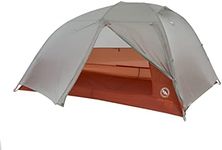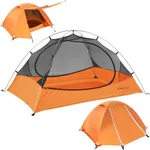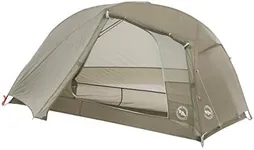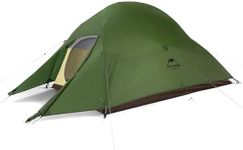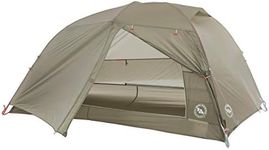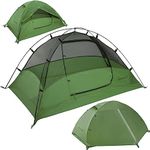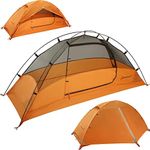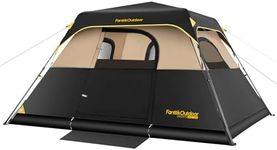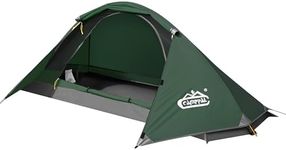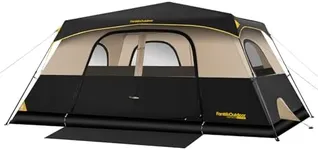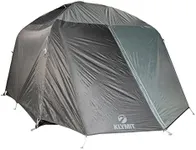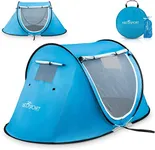Buying Guide for the Best Ultralight Tents
Choosing the right ultralight tent is crucial for a successful and comfortable outdoor adventure. Ultralight tents are designed to be as light as possible while still providing adequate shelter and protection from the elements. When selecting an ultralight tent, it's important to consider several key specifications to ensure you get the best fit for your needs. Here are the main factors to consider and how to navigate them.WeightWeight is the defining characteristic of ultralight tents. It is important because it directly affects how much you have to carry on your back. Ultralight tents typically weigh between 1 to 3 pounds. If you are a long-distance hiker or backpacker, you will want to aim for the lower end of this range to minimize your load. For shorter trips or if you prioritize comfort over weight, a slightly heavier tent might be acceptable.
CapacityCapacity refers to the number of people the tent can accommodate. This is important because it determines how much space you will have inside the tent. Ultralight tents usually come in 1-person, 2-person, or 3-person sizes. If you are hiking solo, a 1-person tent will be the lightest option. For couples or those who want extra space, a 2-person tent is a good balance between weight and comfort. Larger groups should consider multiple tents or a 3-person tent if they are willing to carry the extra weight.
Season RatingSeason rating indicates the tent's suitability for different weather conditions. This is important because it affects how well the tent will protect you from the elements. Ultralight tents are typically rated for 3-season use, meaning they are designed for spring, summer, and fall. These tents are lightweight and provide good ventilation. If you plan to camp in winter or in very harsh conditions, you might need a 4-season tent, but be aware that these are usually heavier.
MaterialThe material of the tent affects its weight, durability, and weather resistance. Common materials include nylon and polyester, often with a silicone or polyurethane coating for waterproofing. Nylon is lighter and more durable, making it a popular choice for ultralight tents. Polyester is slightly heavier but more UV resistant. Consider your typical camping conditions and choose a material that balances weight and durability for your needs.
SetupSetup refers to how easy and quick it is to pitch the tent. This is important because a complicated setup can be frustrating, especially in bad weather. Ultralight tents often use trekking poles for support to save weight, which can be a bit tricky if you are not used to it. Freestanding tents are easier to set up but might be slightly heavier. If you value convenience, look for a tent with a simple and quick setup process.
VentilationVentilation is crucial to prevent condensation inside the tent, which can make your gear and sleeping area damp. Good ventilation is achieved through mesh panels, vents, and the overall design of the tent. If you are camping in warm or humid conditions, prioritize a tent with excellent ventilation. For cooler climates, ensure there is a balance between ventilation and warmth retention.
Packed SizePacked size refers to how small the tent can be compressed for transport. This is important for fitting the tent into your backpack and making it easier to carry. Ultralight tents are designed to pack down very small, often to the size of a water bottle. If you have limited space in your backpack, look for a tent with a compact packed size. However, ensure that the packed size does not compromise the tent's livability and durability.

